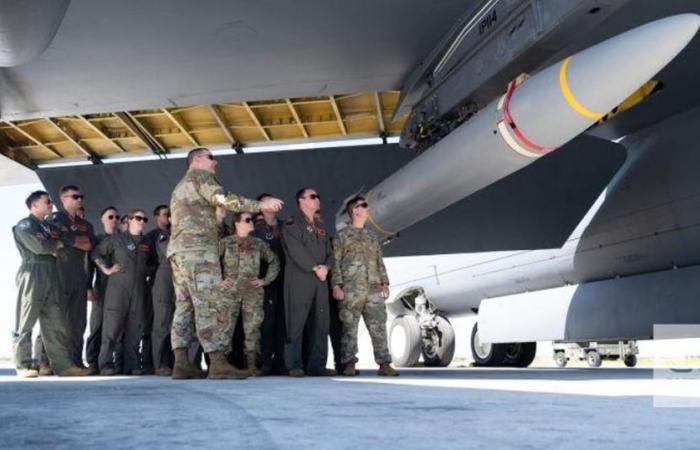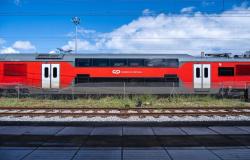The US Air Force has tested a hypersonic cruise missile in the Pacific for the first time, which analysts say is a sign to China that Washington continues to compete in a weapons arena where many consider Beijing to have a distinct advantage. .
On March 17, a B-52 bomber flying from Andersen Air Force Base, on the island of Guam, fired “a complete prototype of an operational hypersonic missile”, confirmed an Air Force spokesperson in statements to CNN.
The test of the hypersonic weapon, officially called ARRW (“All-Up-Round AGM-183A Air-launched Rapid Response Weapon”), was carried out at the Reagan test site, on Kwajalein Atoll, in the Marshall Islands, almost 2,600 kilometers east of Guam, according to the statement.
Previous ARRW tests were carried out off the American continent.
The ARRW is composed of a rocket engine and a hypersonic glide vehicle, which carries a conventional warhead.
“It is intended to attack high-value, time-sensitive ground targets,” according to a 2021 Department of Defense document.
Hypersonic gliders travel at speeds in excess of Mach 5, or approximately 6,400 kilometers per hour, making them difficult to detect and intercept in time. They can also maneuver and vary altitude, allowing them to evade current missile defense systems.
US authorities have already recognized that China and Russia are at the forefront of developing hypersonic technology.
China has been testing hypersonic glide vehicles that can carry nuclear and conventional warheads since 2014, according to the Missile Defense Advocacy Alliance, a nonpartisan lobby group.
A US Air Force general said in 2021 that China had tested a hypersonic glide vehicle weapon that “went around the world”, while Russia fired a Zircon hypersonic cruise missile at Ukraine earlier this year, according to with a Ukrainian government agency.
North Korea also claims to be developing hypersonic weapons. State news agency Korean Central News Agency said on Wednesday that leader Kim Jong Un watched the testing of a new engine for an intermediate-range hypersonic weapon on Tuesday.
Speculation that the United States would test a hypersonic missile in the Pacific arose in late February, when a B-52 carrying the weapon arrived in Guam for what a press release called “hypersonic weapons familiarization training.”
Before the test, analysts said its presence was intended to be seen by Beijing.
“This test is intended to send a clear message to Beijing that Washington remains steadfast in strengthening its strategic posture in the Pacific, even in the midst of competing global challenges,” said Craig Singleton, senior fellow at the US Defense Foundation. Democracies.
“It is clear that a US test will not change China’s hypersonic trajectory, nor will it resolve the serious concerns regarding China’s perceived hypersonic advantage,” Singleton said. “But it reaffirms that the US is not just an observer in the hypersonic domain, it is a formidable actor committed to keeping pace with China and Russia.”
The Air Force did not provide any details about the test, such as how fast or far the ARRW flew or whether it hit a target.
Instead, he said only that lessons were learned.
“The Air Force has gained valuable knowledge about the capabilities of this cutting-edge new technology,” the statement said.
And he added that the test “improved our testing and evaluation capabilities for the continued development of advanced hypersonic systems.” But the future of the ARRW model is uncertain, with Sunday’s test expected to be the last.
Last March, U.S. Air Force leaders told a congressional hearing that there were no plans to acquire ARRWs for combat use.
The Air Force requested $150 million (137 million euros) for ARRWs in fiscal year 2024; however, the National Defense Authorization Act did not authorize any funding for the program, according to a February report from the Congressional Research Service.
But Singleton said it may be too early to rule out ARRW.
“Signs suggest that the Department of Defense may be reconsidering its position on the ARRW program, suggesting a potential revival in light of hypersonic advancements by China and Russia,” he said.
Air Force Lt. Gen. Dale White told the House Armed Services Committee last week that “future ARRW production decisions ‘pending final analysis of all flight test data,'” according to a report from Air and Space Forces magazine.
The latest ARRW tests took place in August and October 2023, but the Air Force has given few details about what was accomplished. The first successful test of the system took place in December 2022.
Tags: tests hypersonic missile Pacific confront China Russia
--





